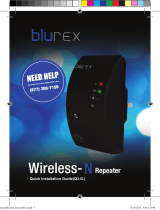
© Copyright 2013 TRENDnet. All Rights Reserved.
TRENDnet User’s Guide
Table of contents
2
Table of Contents
Table of Contents ............................................................................ 2
Product Overview ........................................................................... 4
Package Contents .......................................................................................................... 4
Features ......................................................................................................................... 4
Product Hardware Features........................................................................................... 5
Application Diagram ...................................................................................................... 7
Router Setup ................................................................................... 7
Creating a Home Network ............................................................................................. 7
Router Installation ......................................................................................................... 8
Connect additional wired devices to your network ..................................................... 12
Wireless Networking and Security ................................................. 13
How to choose the type of security for your wireless network .................................. 13
Secure your wireless network ..................................................................................... 14
Connect wireless devices to your router ..................................................................... 15
Connect wireless devices using WPS ........................................................................... 16
Basic ............................................................................................. 17
Access your router management page ........................................................................ 17
Network Status ............................................................................................................ 18
Wireless settings .......................................................................................................... 19
Guest Network ............................................................................................................. 20
Steps to improve wireless connectivity ....................................................................... 21
Parental Control ........................................................................................................... 22
Doman/URL Filters ............................................................................................. 22
IP Filters (LAN Client Filters) .............................................................................. 22
MAC Address Filters ........................................................................................... 23
ADVANCED ................................................................................... 23
Change your router IP address .................................................................................... 23
Set up the DHCP server on your router ....................................................................... 24
Set up DHCP reservation ............................................................................................. 25
Manually configure your Internet connection ............................................................ 25
Clone a MAC address ................................................................................................... 26
Add static routes to your router .................................................................................. 26
IPv6 Internet Connection Settings ............................................................................... 27
Prioritize traffic using QoS (Quality of Service) ........................................................... 28
Advanced wireless settings ......................................................................................... 30
Multiple SSID ..................................................................................................... 30
Wireless bridging using WDS (Wireless Distribution System) ........................... 31
Additional wireless settings ............................................................................... 32
Set your router date and time ..................................................................................... 33
Create schedules ......................................................................................................... 34
Access Control ............................................................................................................. 35
Open a device on your network to the Internet .......................................................... 35
DMZ ................................................................................................................... 35
Virtual Server ..................................................................................................... 36
Special Applications ........................................................................................... 37
Gaming............................................................................................................... 38
Enable/disable Application Layer Gateways (ALG) ...................................................... 39
Enable/disable UPnP on your router ........................................................................... 39
Using External USB Storage ........................................................... 40
Samba Network File Server ......................................................................................... 40
FTP (File Transfer Protocol) Server .............................................................................. 41
Properly Eject USB device ............................................................................................ 42
Print Share Utility Installation ....................................................... 43
Windows Installation ................................................................................................... 43
MAC OS X Installation .................................................................................................. 43




















